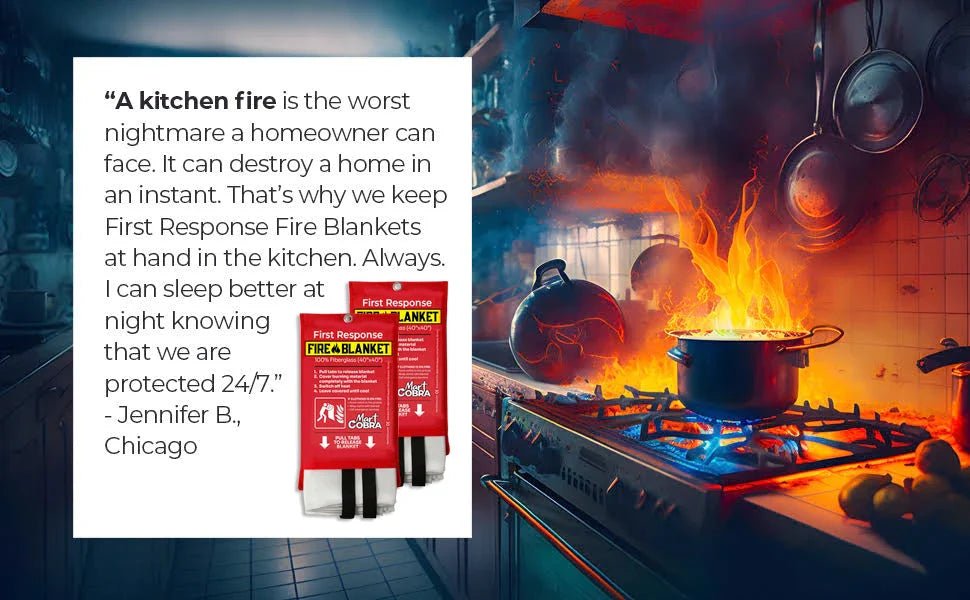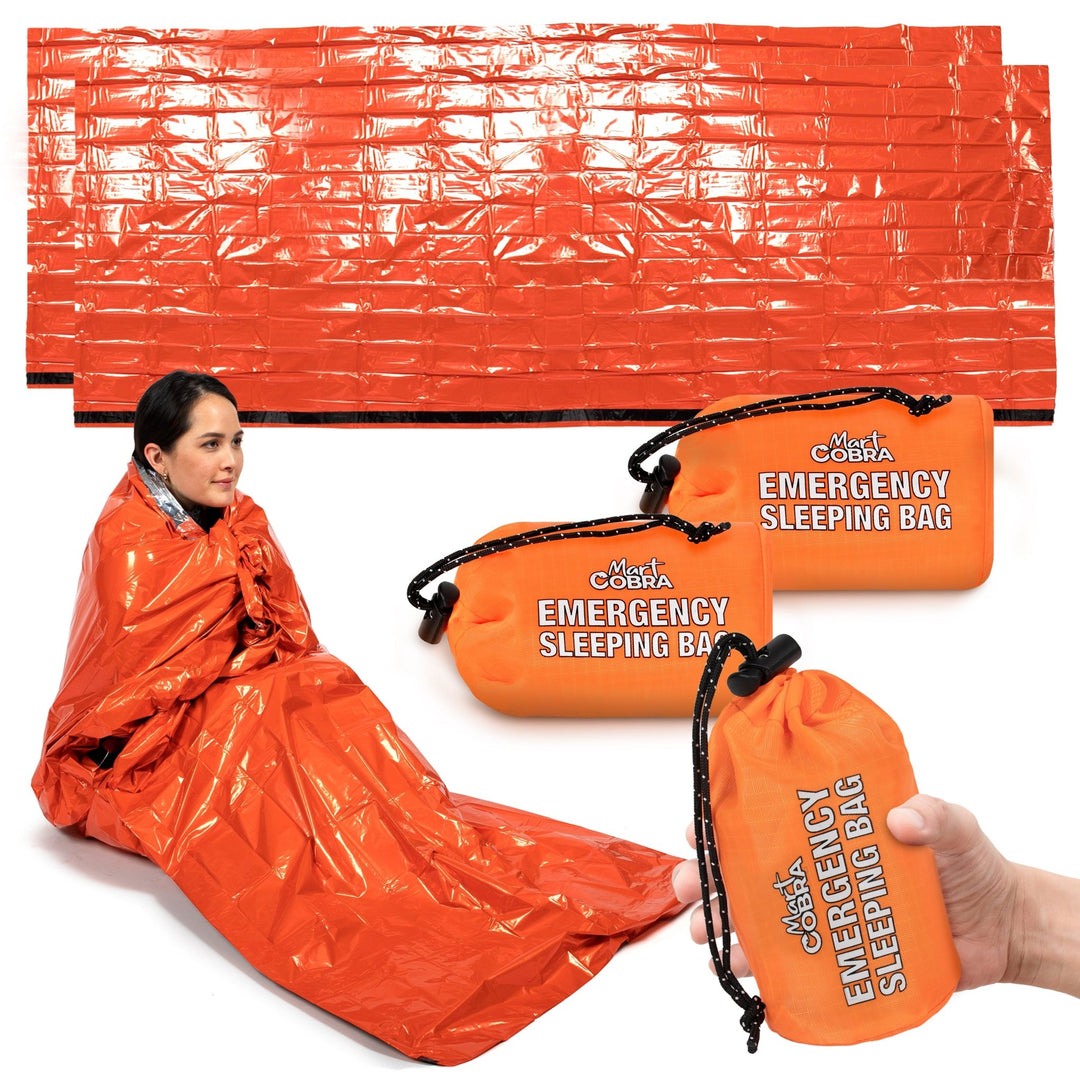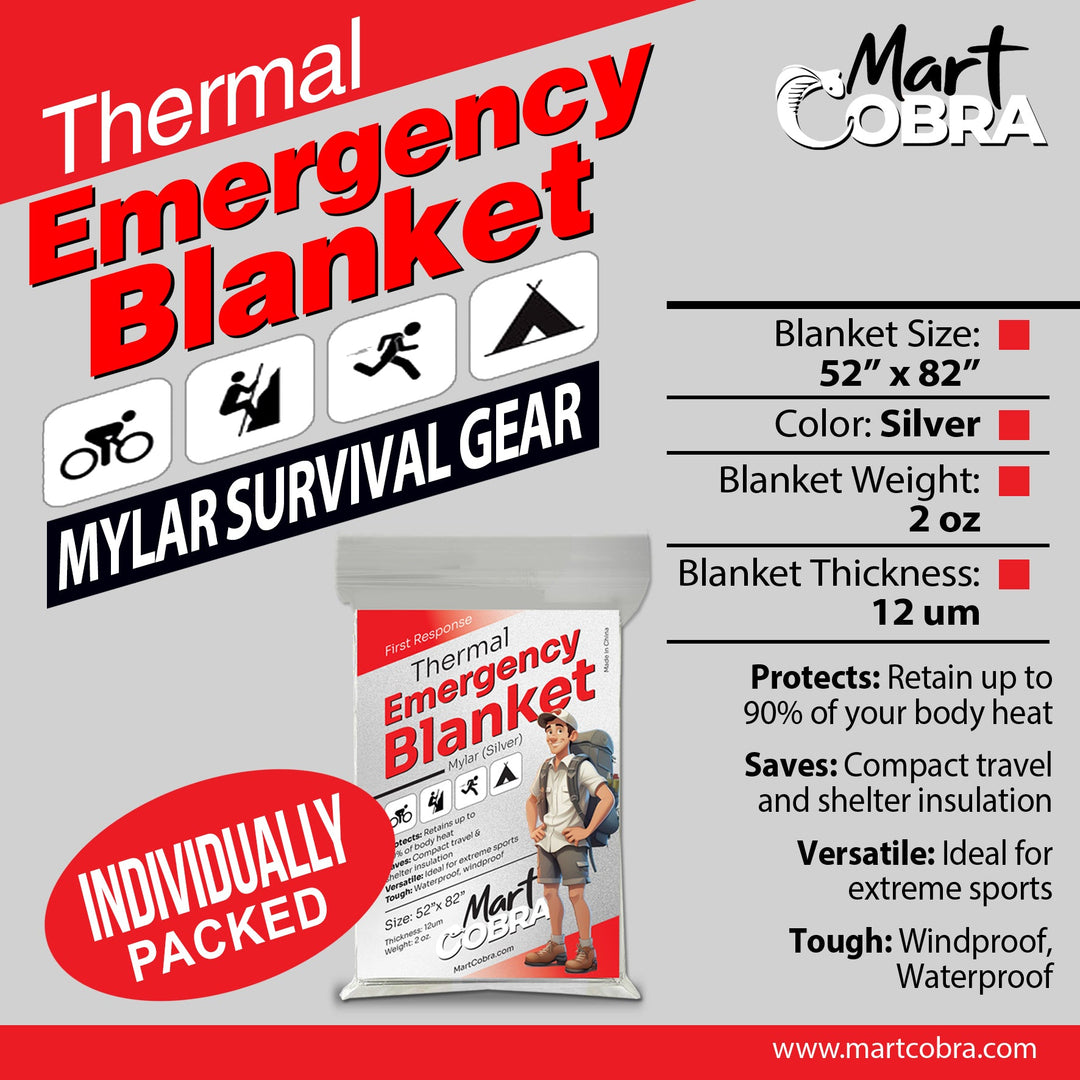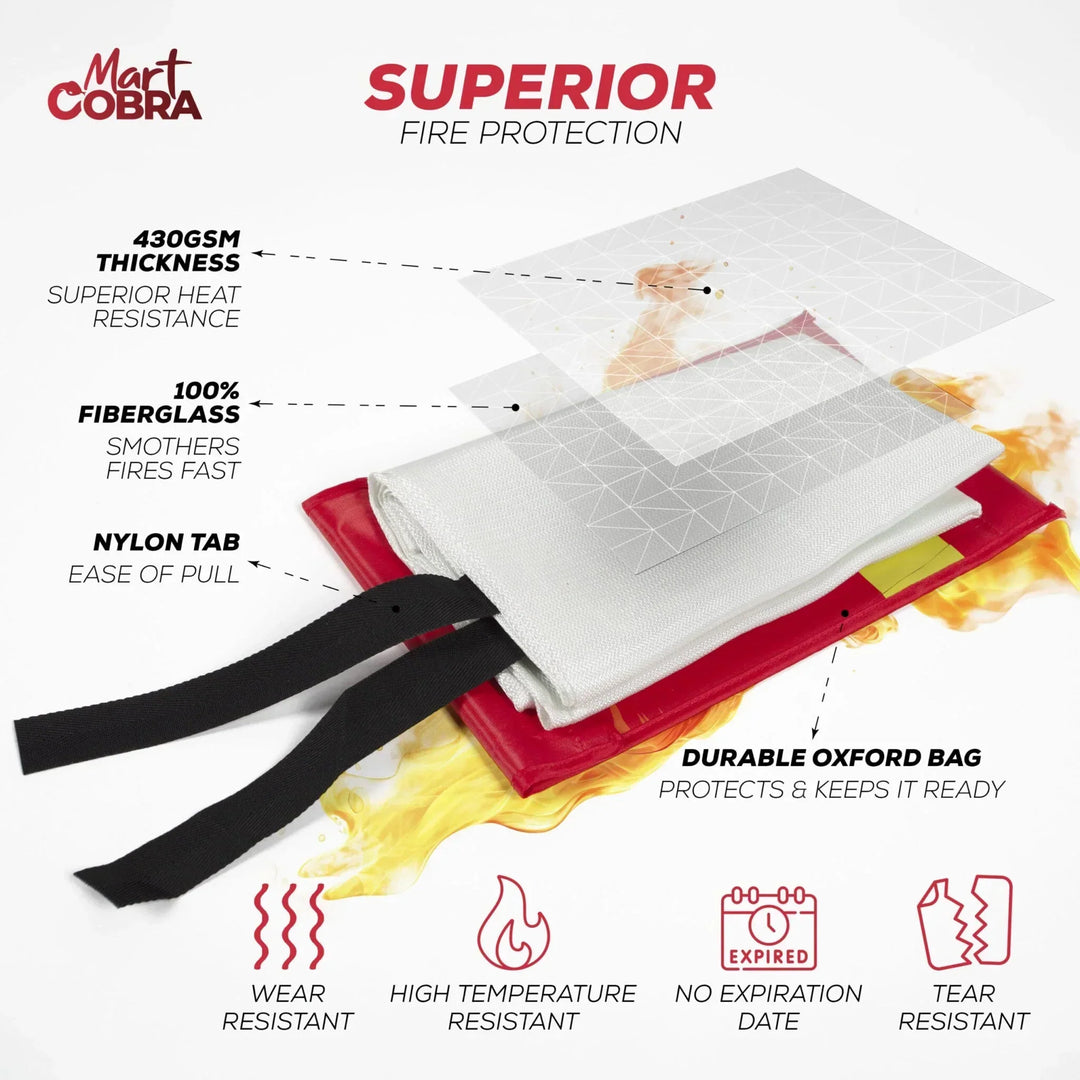The kitchen often serves as the heart of the home. It's where families gather, delicious meals are crafted, and cherished memories are made. But, as the saying goes, where there's smoke, there's fire – and unfortunately, the kitchen is a common site for household fires.
According to the National Fire Protection Association (NFPA), there are approximately 158,400 home structure fires annually. Cooking appliances particularly ranges or cooktops, are responsible for 53 percent of these fires, with unattended cooking being the primary cause.
So, what do you do if a kitchen fire breaks out in your home? The key is to act fast and know how to properly extinguish the flames while keeping yourself and your loved ones safe.
In this comprehensive guide, we'll walk you through the different types of cooking-related fires, the steps you need to take to extinguish them safely and effectively, and crucial tips for fire prevention when cooking food in your kitchen.
Understanding the Types of Kitchen Fires
Before we jump into action plans and fire-fighting techniques, it's crucial to understand what kinds of fires you may encounter while cooking in the kitchen. Here are four common types of cooking-related fires:
Stovetop Fire
A stovetop fire happens when oil or grease gets too hot in the pan and ignites. This type of fire can spread quickly, so it's essential to act fast.
Oven Fire
An oven fire occurs when food debris or grease buildup catches fire inside the oven. It can happen if you accidentally leave something in the oven for too long, resulting in smoke and flames.
Grease Fire
Grease fires typically happen when cooking with oil or other fatty substances that can ignite and spread quickly. They are often the most dangerous type of fire in the kitchen, and if not handled correctly, they can cause severe damage to your home.

Electrical Fire
While not as common, electrical fires can occur in the kitchen from faulty wiring or malfunctioning appliances. Electrical fires require a different approach, so knowing how to handle them is crucial. Shut off the power source if it is safe to do so, and use a fire extinguisher rated for electrical fires—never use water on them.
Extinguishing a Kitchen Fire
Now that we've clarified the distinctions between the types of fires you may encounter in your kitchen, let's explore how to extinguish them safely and effectively. Keep in mind that safety always comes first, so if at any point you feel overwhelmed or in danger, evacuate immediately and call for help.
Stay Calm and Assess the Situation
The first and most crucial step in any emergency is to stay calm. Panicking can cause you to make rash decisions that can worsen the situation. Quickly assess the fire and determine if it’s safe for you to attempt to extinguish it.
Turn Off the Heat Source
In the case of a stovetop fire, turn off the burner or remove the pan from the heat source. For an oven fire, turn off the heat and keep the door closed to smother the flames.
Cover the Flames
If a small fire has started in your frying pan or pot, quickly cover it with a metal lid or baking sheet. The lack of oxygen will suffocate the flames. You can even use a fire blanket to cover the burning pot.
Use Baking Soda or Salt
You can also use baking soda or salt to smother the flames for small grease fires. Sprinkle a generous amount onto the fire until it is out.
Never Use Water on a Grease Fire
Water and oil don't mix; using water on a grease fire will only make it worse. The water will cause the oil to splatter and spread the flames, potentially causing severe burns.

Employing a Fire Blanket
A fire blanket can be a lifesaver for a grease fire that has gotten out of control. To use:
- Unfold the blanket.
- Carefully and slowly place the fire blanket over the fire, starting from the edge closest to you.
- Use the blanket to completely cover the fire without creating air pockets that can feed the flames.
Be sure to wear oven mitts or other protective clothing when using a fire blanket to avoid burns.
Which Fire Blanket to Use
With different types of fire blankets available in the market, you may wonder which one to use. For cooking-related blazes, it's best to use a blanket made of fire-resistantfiberglass fabric that can withstand high heat levels.
Benefits of Using Fire Blanket
Fire blankets are an excellent addition to your kitchen fire safety arsenal. They are easy to use, compact, and can quickly put out small fires before they escalate. Additionally, fire blankets leave no residue or damage behind after use.
Use a Fire Extinguisher
Use afire extinguisher for fires that are too large to control with a fire blanket. Make sure you have the right type of extinguisher for the specific type of fire. For kitchen-related blazes, look for an ABC-rated extinguisher that can handle different types of fires.
When using a fire extinguisher:
- Pull the safety pin.
- Aim at the base of the fire, not the flames.
- Squeeze and sweep from side to side until the fire is out.
Remember to have your back towards an exit if you need to evacuate quickly.
Knowing When to Evacuate
If, at any point during a kitchen fire, you feel overwhelmed or unsafe, evacuate immediately. Ensure everyone in the house is aware of the fire and leave the premises as quickly and safely as possible. Call emergency services for assistance.
How to Prevent Kitchen Fires
The best way to deal with a cooking fire is to never have one in the first place. Here are some key preventive measures:
Watch What You Heat
Unattended cooking causes almost 90 percent of kitchen fires. Never leave your cooking unattended. Staying in the kitchen while you're frying, boiling, grilling, or broiling food is an important rule to follow. If you have to leave, turn off the burner.
What About the Recipes That Need Overnight Cooking?
You can use a slow cooker or set a timer to remind you to check on the food. If you're away, have someone check on the food periodically.

Keep Your Cooking Space Clutter-Free
Keep your stovetop and oven clean from grease buildup, food particles, and other flammable materials. Wipe down your stove and oven regularly to avoid potential fire hazards.
Keep Flammable Items Away from Heat Sources
Keep anything flammable, like kitchen towels, paper towels, and oven mitts, away from heat sources. A stray towel or pot holder too close to your stove can quickly catch fire.
Also, ensure curtains and other flammable materials are not near your stovetop or oven.
Wear Appropriate Clothing
Avoid wearing loose-fitting clothing, long sleeves, or dangling accessories that can easily catch on fire while cooking. Opt for short-sleeved shirts and fitted aprons instead.
Have a Fire Blanket Mounted in the Kitchen
Having a fire blanket easily accessible in your kitchen can save you valuable time in the event of a cooking fire. Mount it on a wall or inside a cabinet for quick access.
Keep a Fire Extinguisher Within Reach
Having a fire extinguisher in your kitchen can save valuable time and prevent a small cooking fire from becoming a major disaster. Make sure to have one rated for all types of fires, including grease and electrical, and know how to use it properly.
Regularly Maintain Your Kitchen Appliances
Faulty wiring or malfunctioning appliances can also start a fire in your kitchen. Inspect and regularly maintain all your kitchen appliances, including stoves, ovens, and microwaves.
If you notice any frayed cords or sparks coming from an appliance, unplug it immediately and have it repaired or replaced.
Be Prepared
Ensure that smoke detectors are working and that your family has an escape plan in case a fire spreads. Have your fire extinguisher and fire blanket easily accessible in the kitchen.
Know Your Limits
Don't overestimate your ability to multitask – and especially don't try to cook when you're tired or under the influence of alcohol.

After a Cooking Fire
The danger doesn't always pass when the flames are extinguished. Here's what you need to do next:
Assess the Situation
Give the area time to cool before attempting to clean up. There may be hot spots that could still ignite any flammable material.
Cleanup
Once it's safe, clean all utensils and dishes used to extinguish the fire. Throw out any cooked food. Clear any food or grease from the stovetop, as this can cause future fires if left unattended.
Home Maintenance
Inspect your kitchen and appliances for any damage. You may need professional repairs for your stove or oven if they've been affected by the fire.
Final Thoughts
Cooking fires can happen to anyone at any time. By following these preventive measures and knowing how to respond in case of a fire, you can keep yourself and your kitchen safe from potential disasters.
Remember, it’s better to prevent a fire than to fight one, so stay vigilant in the kitchen. By being knowledgeable and prepared, you’re not just protecting your home; you’re protecting what makes it special-you and your family.






